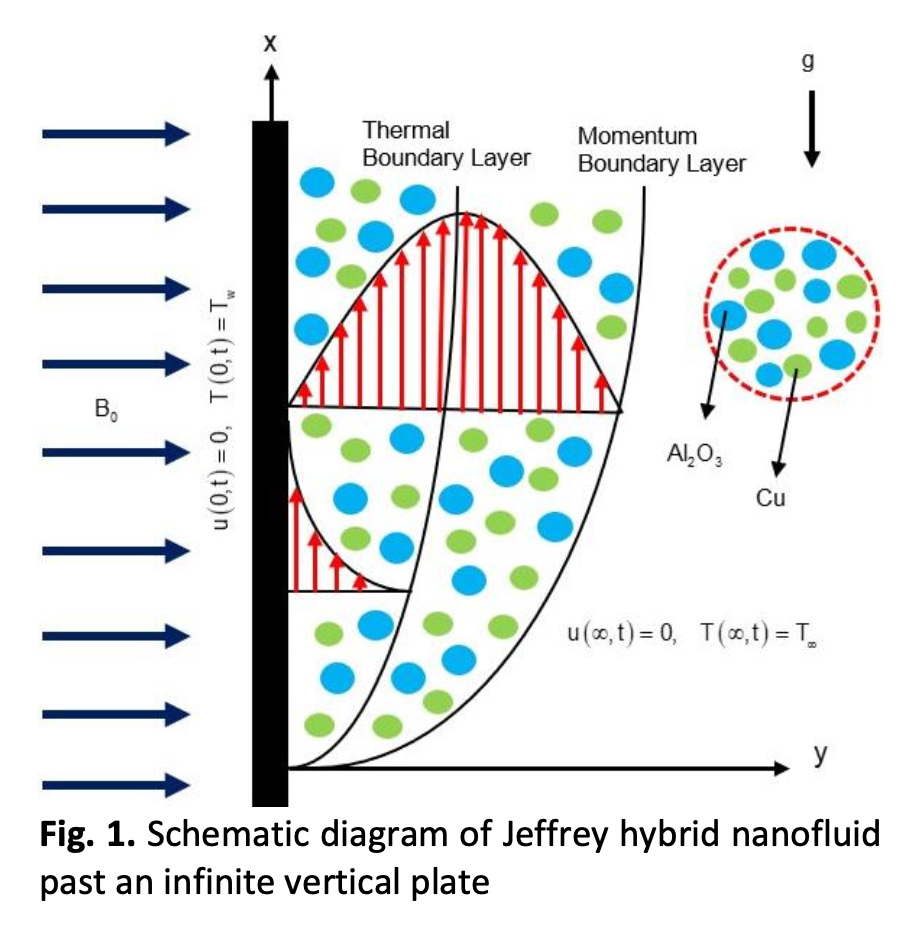Heat Transfer in Hartmann Flow of Hybrid Nano-Jeffrey Fluid with Heat Absorption and Thermal Radiation Impact
DOI:
https://doi.org/10.37934/arfmts.112.1.3861Keywords:
Unsteady Jeffrey hybrid nanofluid, magnetic field, radiation, heat absorption, Laplace transformAbstract
In this study, we examine how heat radiation and absorption affect the flow of Jeffrey fluid across an infinite vertical plate in an unsteady magnetohydrodynamic (MHD) free convection flow. We use alumina (Al2O3) and copper (Cu) nanoparticles in water assuming it as a base fluid. The problem is solved, and exact solutions are obtained using the Laplace transform method. For embedded parameters like radiation parameter, heat absorption parameter, Hartmann number, Grashof number, material parameter of Jeffrey fluid, volume fraction of hybrid nanofluid, time, and Prandtl number, results of velocity and temperature distributions are visually displayed. It is clear from the results that while raising the heat absorption parameter and Prandtl number causes a decrease in the velocity and temperature profiles whereas increasing radiation parameter and Grashof Number increases the hybrid nanofluid velocity. The resulting analytical solution is then verified by comparing it to the results of the earlier investigation and is determined to be in excellent accord. This outcome may be used in a number of nanofluid cooling systems. This research might serve as a reference for other numerical and experimental studies as well as a manual for several industries because the answers are established in an analytical form.
Downloads
































